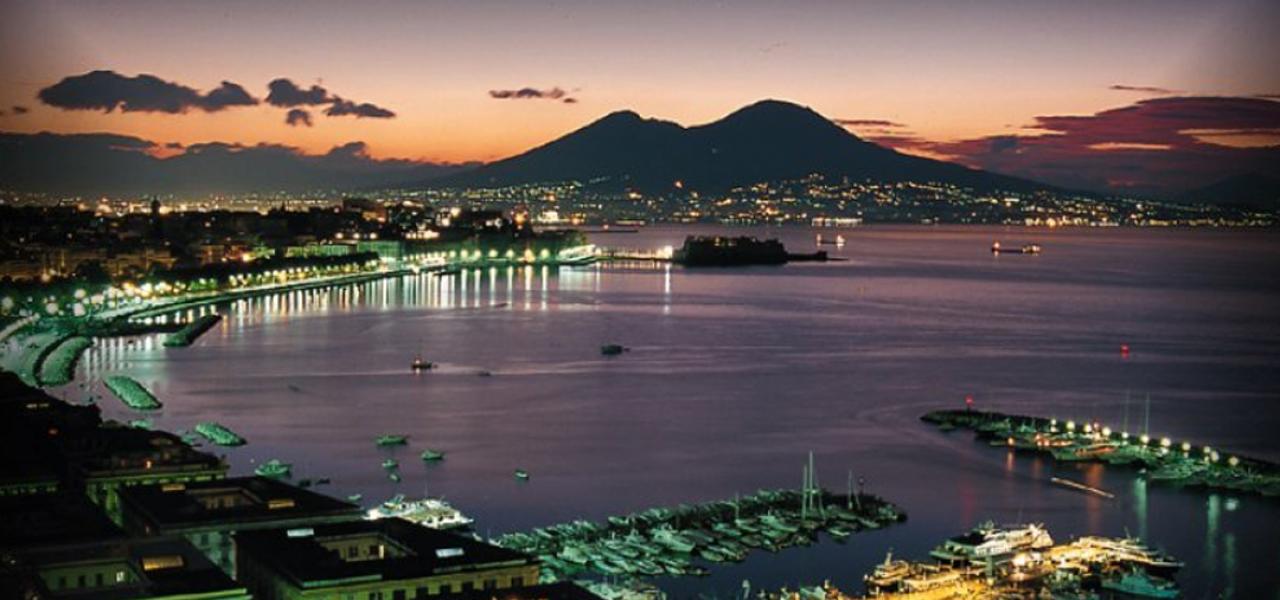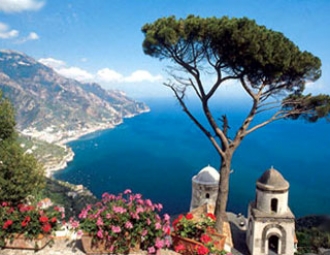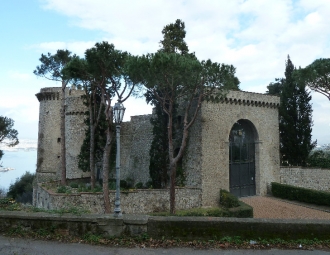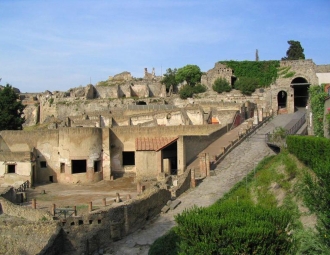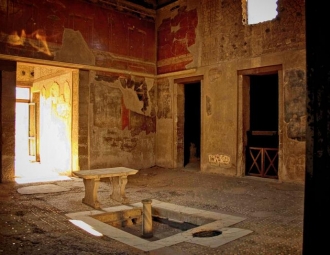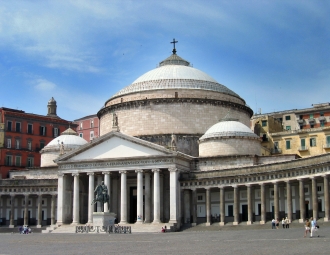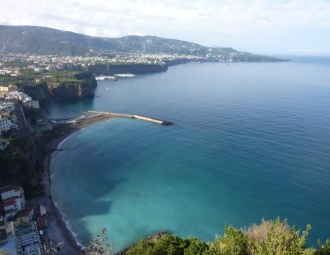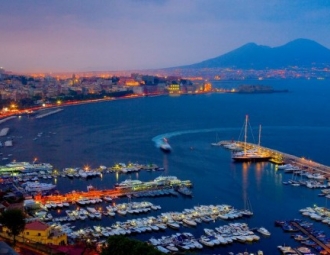Surroundings
Amalfi Coast
To see: Acciaroli – Agropoli – Amalfi – Atrani - Capaccio – Cetara – Conca dei Marini – Maiori – Minori – Paestum – Palinuro – Ravello – Cetara – Tramonti – Vietri sul Mare – Ravello
Castellammare di Stabia
Situated between the Gulf of Naples and the Sorrento Peninsula, here you will find a small bay that takes its name from the city: Castellammare di Stabia. It owes its name to the ancient 9th-century fortress which was built close to the sea's edge by the Sorrentine people to defend their Dukedom.
There are many traces of the art and history of past centuries in the buildings to be seen here, such as the the Medieval Castle, the Cathedral, the Stabiae Antiquarium, the Quisisana Royal Palace, the Villa Arianna and the Villa San Marco. We also recommend the Church of S.S. Salvatore and the Cave of St Biagio.
Castellammare di Stabia is known for its precious thermal waters with two spas: the Antiche Terme Stabiane and the Nuove Terme, both located on the hill of Solaro.
People who choose Castellammare di Stabia will also have the chance to make an excursion to the mountains that overlook the Gulf, such as the Monti Lattari, and visit some villages in a panoramic position, like Lettere.
Thanks to its central position, it's also very easy to reach Pompeii and Sorrento from there.
Moreover, for those who like to know everything of the place they visit, do not forget that Castellammare di Stabia has an important shipyard, where several different giants of the sea have been launched.
Pompeii
The worldwide fame of Pompeii is, without the shadow of a doubt, linked to the eruption of the Vesuvius on 29th August 79 A.D., which completely buried the city and the neighbouring towns of Herculaneum and Stabiae. The hidden town was discovered by chance in1594 by the architect Domenico Fontana during the construction of a canal.
However, it was only in the more recent digs that three fifths of the entire city was rediscovered, thanks to Amedeo Maturi. In 1924, he was the archaeologist who brought back to light the Villa Jovis in Capri, and then De Franciscis in 1961. Today Pompeii is not only an archaeological pearl in Campania but, surely, in the whole world, and is visited by tourists from all over the world.
It should be emphasized that, in addition to visit Pompeii ruins, there is also the Amphitheatre, the "Villa dei Misteri" and the religious complex known for the devotion to the Pompeii Virgin: the Sanctuary of Pompeii, the Cathedral and the Museum of the Papal Sanctuary of Pompeii.
Herculaneum
At the feet of Mount Vesuvius, in an area blessed with a superb mild climate and a breath-taking panorama from the Vesuvius to the Gulf of Naples, Herculaneum is known throughout the world for the remains of its Roman city buried, along with Pompeii, under the ashes expelled by the eruption of Vesuvius in 79 A.D. That's why it became a center of enormous archaeological value.
At the archaeological site of Herculaneum it is possible to visit the House of Argo, the House of the Deer, the House of the Gem, the House of the Bicentenary, the House of the Mosaic, the House of the Relief of Telephus, the House of the Carbonized Partition, the House of the Mosaic Atrium, the Samnite House, the Gymnasium, the Theatre, the Baths, the Suburban Baths and the Villa of the Papyrus. Don't miss also the MAV "Museo Archeologico Virtuale" and the "Miglio d'oro Villas".
As well as being a site of great archaeological interest, Herculaneum has a flourishing economy thanks to its agricultural industry, and in particular its floricultural one, responsible for one of Italy's most prolific productions of carnations and roses. Herculaneum is an important port with a small fleet of fishing boats and merchant ships which provide employment for a great number of the town's inhabitants. While visiting Herculaneum, do not forget the large market of Pugliano, where both new and used clothes are sold.
Naples
Between the Sorrento Peninsula and the Campi Flegrei, Naples, the administrative centre of the Campania region, is considered one of the most beautiful towns of South Italy and gazes out on to the open gulf of the Tyrrhenian sea, within a spectacular setting, dominated by Vesuvius.
Home to the most important port of all southern Italy, Naples has a great artistic, historical and cultural patrimony visible in numerous sites such as the Piazza Municipio with "Castel Nuovo" (Maschio Angioino ), Sansevero Chapel, the San Carlo Theatre, the "Piazza del Plebiscito" with its "Basilica di San Francesco di Paola" and the Royal Palace.
Within the city of Naples you should visit also the "Monastery of Santa Chiara", the Cathedral, the "Chiesa del Gesù", "Castel Sant'Elmo", "Castel dell'Ovo" and the famous "Via Caracciolo".
Well worth a visit, "via San Biagio dei Librai" and San Gregorio Armeno, the historic roads with numerous artists' studios and craftsmen's workshops.
Sorrento
It is still not certain exactly when the town was founded, but Sorrento was, without doubt, already a strategic commercial town for both the Greeks and the Etruscans. Today, Sorrento is a tourist destination of international fame, thanks to a series of ancient traditions including the production of wine and fine craftsmanship.
Oranges, lemons, walnuts, olives and a great variety of cheeses are produced here. The wine production is quite remarkable.The town is famous for its wood engraving and lace work, a tradition that dates back to the sixteenth century.
Local jewellers make exquisite coral necklaces in various styles and dimensions. All these goods can be found in the little shops tucked away in the Sorrento alleyways.
Sorrento boasts a number of important religious sites such as the archbishop's palace, the Basilica di Sant'Antonio, the Church of St. Maria del Carmine, the Church of San Francesco d'Assisi, the Cathedral and the Monastery of St. Maria delle Grazie. Also well worth visiting are the Correale Museum of Terranova, the Sedile Dominova and the Via della Pietà.
Gulf of Naples
Vibrant, passionate, unique: words which perfectly describe the bay lying in the shadow of Vesuvius. A land home to ancient traditions, archaeological and artistic treasures, and the world's most enchanting islands.
From Capo Miseno to Sorrento and back. Not even the cement flows, difficult to forget, were able to destroy the breath-taking charm of the Bay of Naples. An area steeped in centuries of history is illuminated by the bright frame of the gulf.
There are many activities to choose from in this region. The restful beauty of Sorrento among the citrus groves, or the lunar crater of Vesuvius. The village of Bacoli with the Roman ruins of the Cento Camerelle and Piscina Mirabilis, or the beautiful artifacts by the Museum of Coral in Torre del Greco. The scenic journey through time that can be done by visiting Pompeii ruins, or looking out the "fenestra di Marechiaro" sung by Salvatore Di Giacomo.
Tel.: +39 081 8723383 - Fax: +39 0818717009 - E-mail: info@lamedusahotel.com

